Lot details By Shisen, signed and sealed Shisen Japan, 18th century, Edo period (1615-1868) Of rounded rectangular form, the rims of silver, the flush-fitting cover with a raised edge enclosing a slightly domed top, the roiro ground with superb iro-e takamaki-e, hiramaki-e, togidashi, kirikane, and e-nashiji to depict an elaborately decorated yamaboko float, its roof flanked by two dragon fish and surmounted by a tall pole with a naginata halberd sword partly obscured by clouds, beside a smaller cart with a figure wearing voluminous robes, carrying a sword tied to the back, holding a fish in one hand and a parasol in the other. The interior of the cover is decorated in masterful togidashi-e and e-nashiji against a roiro ground with two samurai. The matching baseboard similarly decorated with the top of the float’s pole emerging from the clouds, showing a red banner and a flaming tama finial, and fitted with a rectangular signed suzuri (inkstone) and a silver suiteki (waterdropper) depicting a scroll and leaves. The base with sparse nashiji. The side of the cover signed and sealed SHISEN. SIZE 2.8 x 23.5 x 16.4 cm Condition: Excellent condition with only very minor wear. Provenance: According to notes included with the suzuribako, the present lot was gifted by the Japanese royal family to General Douglas MacArthur, who in turn gave it to his aid Colonel Courtney Whitney. The base with an old label, ‘244. 18th cent. writing box’. A filing card and a paper with the collector’s notes on the present lot, its provenance, and lacquer techniques, accompany this lot. Douglas MacArthur (1880-1964) was an American military leader who served as General of the Army for the United States and oversaw the occupation of Japan from 1945 to 1951. As the effective ruler of Japan, he oversaw sweeping economic, political, and social changes. The Japanese subsequently gave MacArthur the nickname Gaijin Shogun ('The foreign Shogun'). Major General Courtney Whitney (1897-1969) was a lawyer and United States Army commander during World War II. Whitney remained close to MacArthur throughout the occupation of Japan and served as Chief of the Government Section at his headquarters. He accompanied MacArthur during the Korean War and received a Silver Star and second Legion of Merit for his visits to the front. Whitney resigned from the army after MacArthur was removed from command in 1951. The float depicted on the present suzuribako is one that appears in the Gion Festival which takes place annually during the month of July in Kyoto and is one of the most famous and largest festivals in Japan. This festival originated during an epidemic in 869 as part of a purification ritual (goryo-e) to appease the gods thought to cause fire, floods and earthquakes. The floats in the Yoiyama Parade are divided into two groups, the larger Hoko ("halberd") and the smaller Yama ("mountain") and are collectively called Yamaboko. The ten Hoko recall the 66 halberds or spears used in the original purification ritual, and the 24 Yama carry life-sized figures of Shinto deities, Buddhist bodhisattvas, and other historic and cultural figures. The character Shisen can be translated as ‘Grass’ and ‘Spring, a natural wellspring’ in this example. There are several lacquer artists with the same pronunciation Shisen; the maker of the present suzuribako is listed in Earle, Joe [ed.] (1995) The Index of Inro Artists, p. 244. Considering the exceptional quality of the togidashi work, a painstaking lacquering process which involves applying several layers of lacquer which are then carefully polished to create a flat image, it is plausible that Shisen was related to the Shiomi Masanari line of lacquerers who excelled in the quality of their togidashi-e work. Auction comparison: Compare a related suzuribako by the master-lacquerer Shisen, dated late 17th to 18th century, depicting Seiobo, at Christie’s, 16 March 2021, New York, lot 54 (sold for 40,000 USD).
Lot details By Shisen, signed and sealed Shisen Japan, 18th century, Edo period (1615-1868) Of rounded rectangular form, the rims of silver, the flush-fitting cover with a raised edge enclosing a slightly domed top, the roiro ground with superb iro-e takamaki-e, hiramaki-e, togidashi, kirikane, and e-nashiji to depict an elaborately decorated yamaboko float, its roof flanked by two dragon fish and surmounted by a tall pole with a naginata halberd sword partly obscured by clouds, beside a smaller cart with a figure wearing voluminous robes, carrying a sword tied to the back, holding a fish in one hand and a parasol in the other. The interior of the cover is decorated in masterful togidashi-e and e-nashiji against a roiro ground with two samurai. The matching baseboard similarly decorated with the top of the float’s pole emerging from the clouds, showing a red banner and a flaming tama finial, and fitted with a rectangular signed suzuri (inkstone) and a silver suiteki (waterdropper) depicting a scroll and leaves. The base with sparse nashiji. The side of the cover signed and sealed SHISEN. SIZE 2.8 x 23.5 x 16.4 cm Condition: Excellent condition with only very minor wear. Provenance: According to notes included with the suzuribako, the present lot was gifted by the Japanese royal family to General Douglas MacArthur, who in turn gave it to his aid Colonel Courtney Whitney. The base with an old label, ‘244. 18th cent. writing box’. A filing card and a paper with the collector’s notes on the present lot, its provenance, and lacquer techniques, accompany this lot. Douglas MacArthur (1880-1964) was an American military leader who served as General of the Army for the United States and oversaw the occupation of Japan from 1945 to 1951. As the effective ruler of Japan, he oversaw sweeping economic, political, and social changes. The Japanese subsequently gave MacArthur the nickname Gaijin Shogun ('The foreign Shogun'). Major General Courtney Whitney (1897-1969) was a lawyer and United States Army commander during World War II. Whitney remained close to MacArthur throughout the occupation of Japan and served as Chief of the Government Section at his headquarters. He accompanied MacArthur during the Korean War and received a Silver Star and second Legion of Merit for his visits to the front. Whitney resigned from the army after MacArthur was removed from command in 1951. The float depicted on the present suzuribako is one that appears in the Gion Festival which takes place annually during the month of July in Kyoto and is one of the most famous and largest festivals in Japan. This festival originated during an epidemic in 869 as part of a purification ritual (goryo-e) to appease the gods thought to cause fire, floods and earthquakes. The floats in the Yoiyama Parade are divided into two groups, the larger Hoko ("halberd") and the smaller Yama ("mountain") and are collectively called Yamaboko. The ten Hoko recall the 66 halberds or spears used in the original purification ritual, and the 24 Yama carry life-sized figures of Shinto deities, Buddhist bodhisattvas, and other historic and cultural figures. The character Shisen can be translated as ‘Grass’ and ‘Spring, a natural wellspring’ in this example. There are several lacquer artists with the same pronunciation Shisen; the maker of the present suzuribako is listed in Earle, Joe [ed.] (1995) The Index of Inro Artists, p. 244. Considering the exceptional quality of the togidashi work, a painstaking lacquering process which involves applying several layers of lacquer which are then carefully polished to create a flat image, it is plausible that Shisen was related to the Shiomi Masanari line of lacquerers who excelled in the quality of their togidashi-e work. Auction comparison: Compare a related suzuribako by the master-lacquerer Shisen, dated late 17th to 18th century, depicting Seiobo, at Christie’s, 16 March 2021, New York, lot 54 (sold for 40,000 USD).

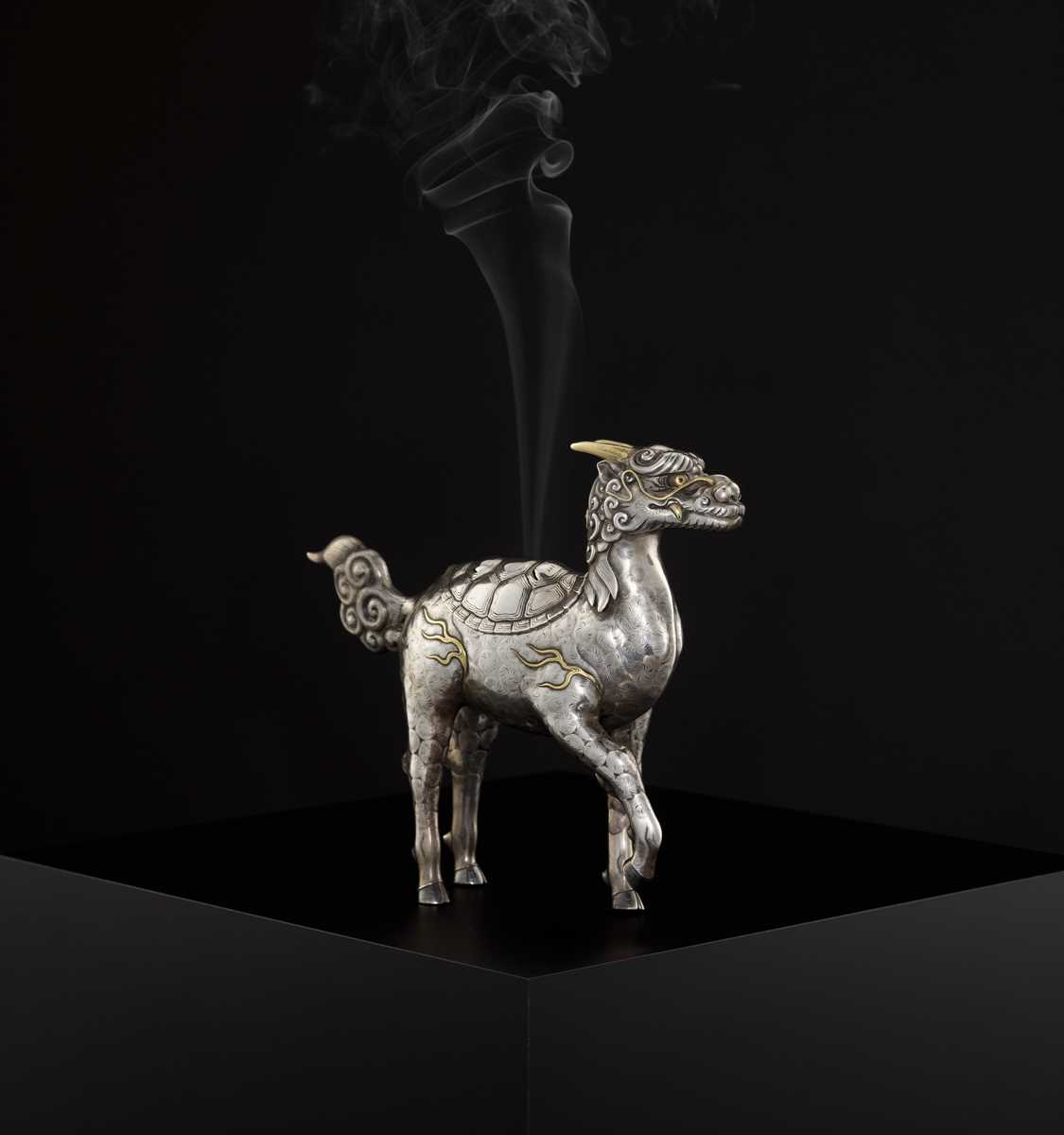
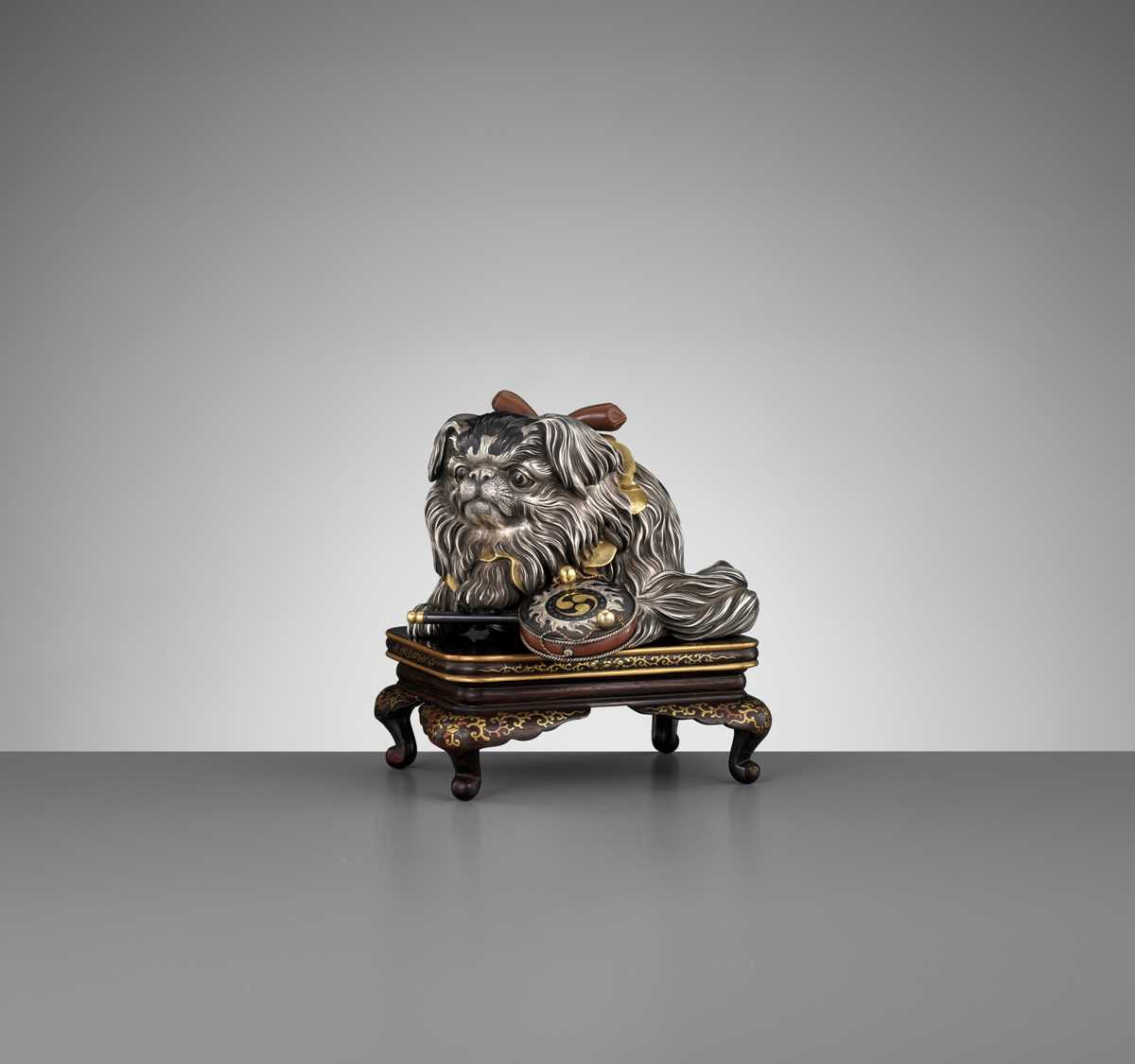
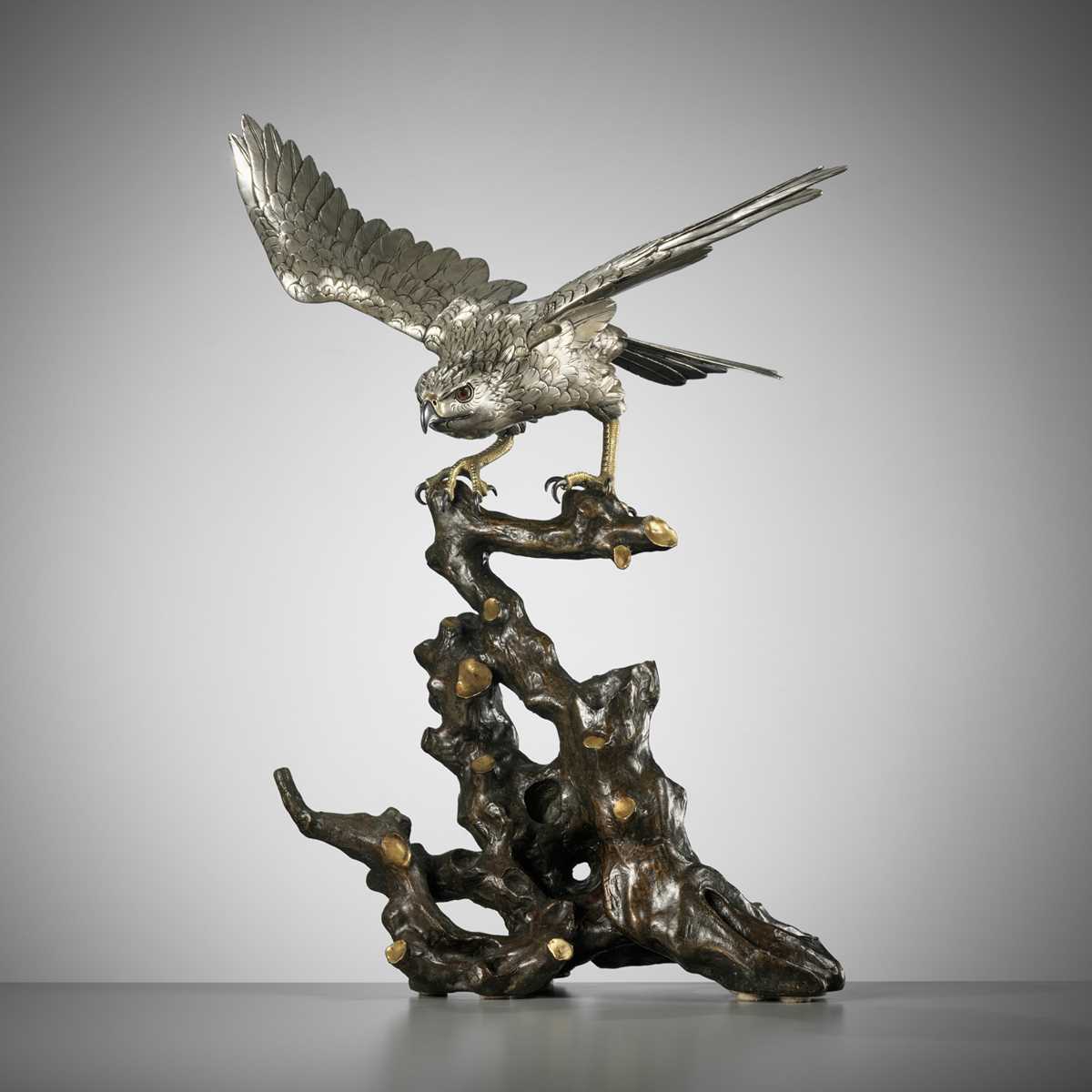

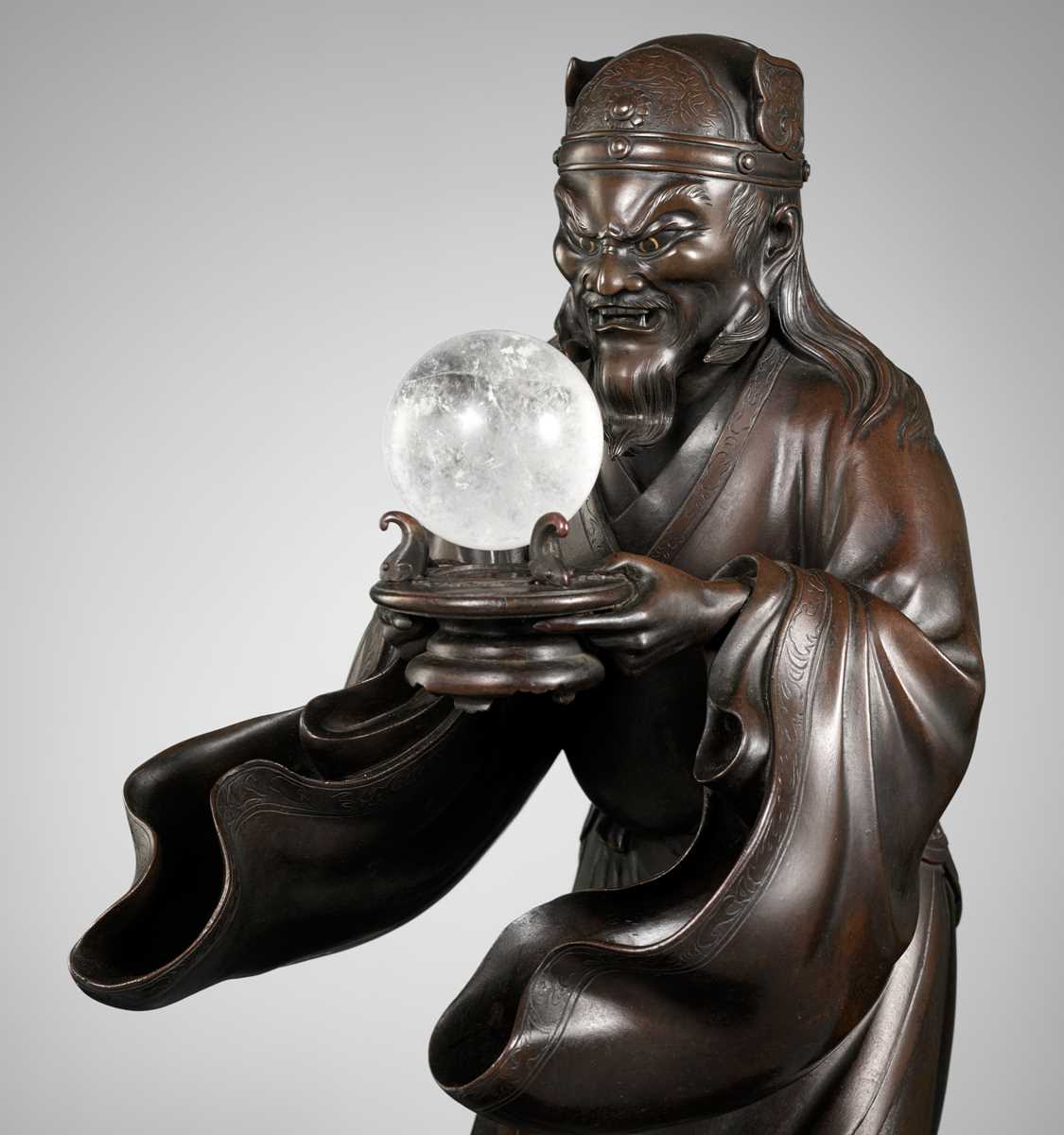
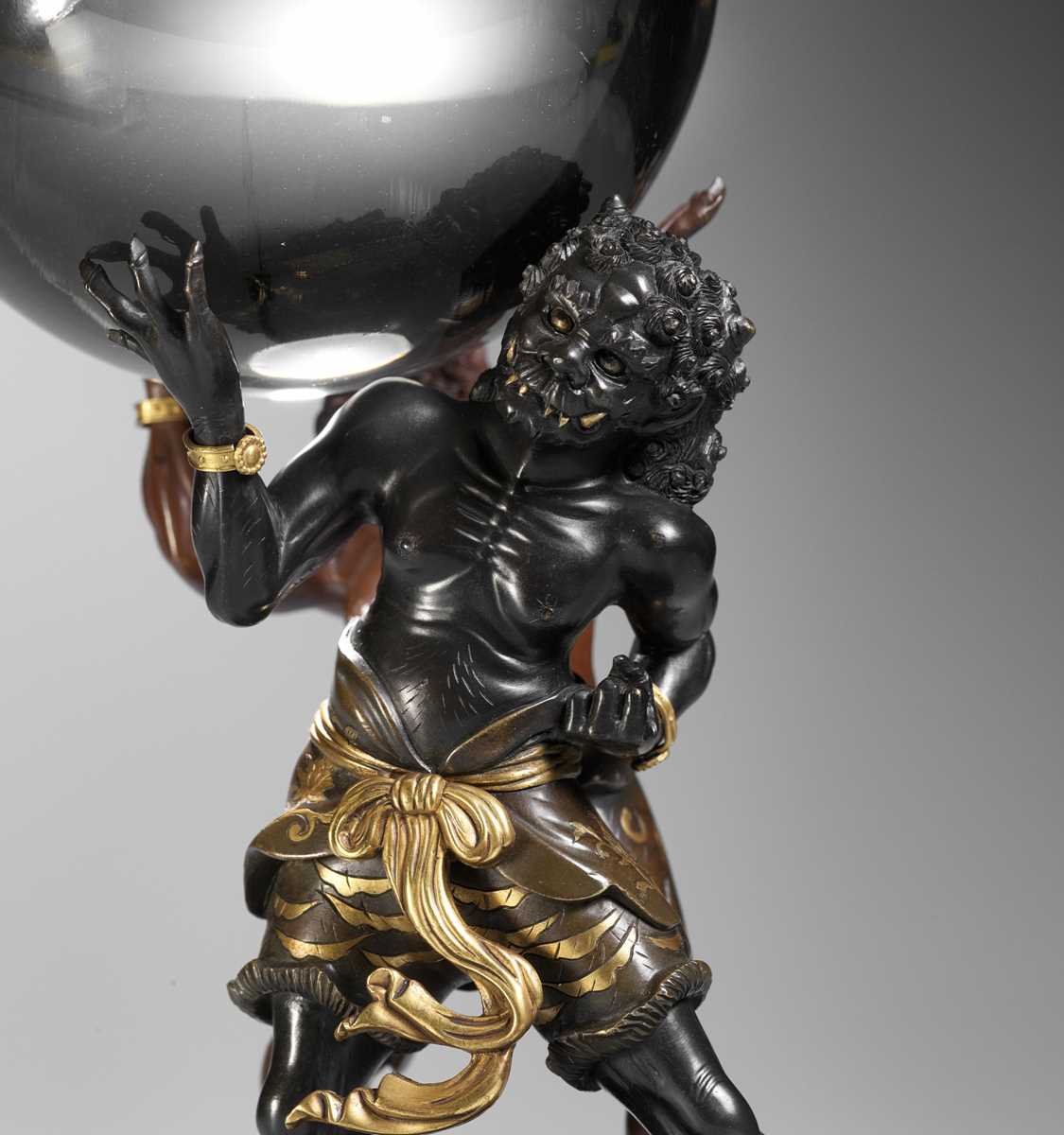

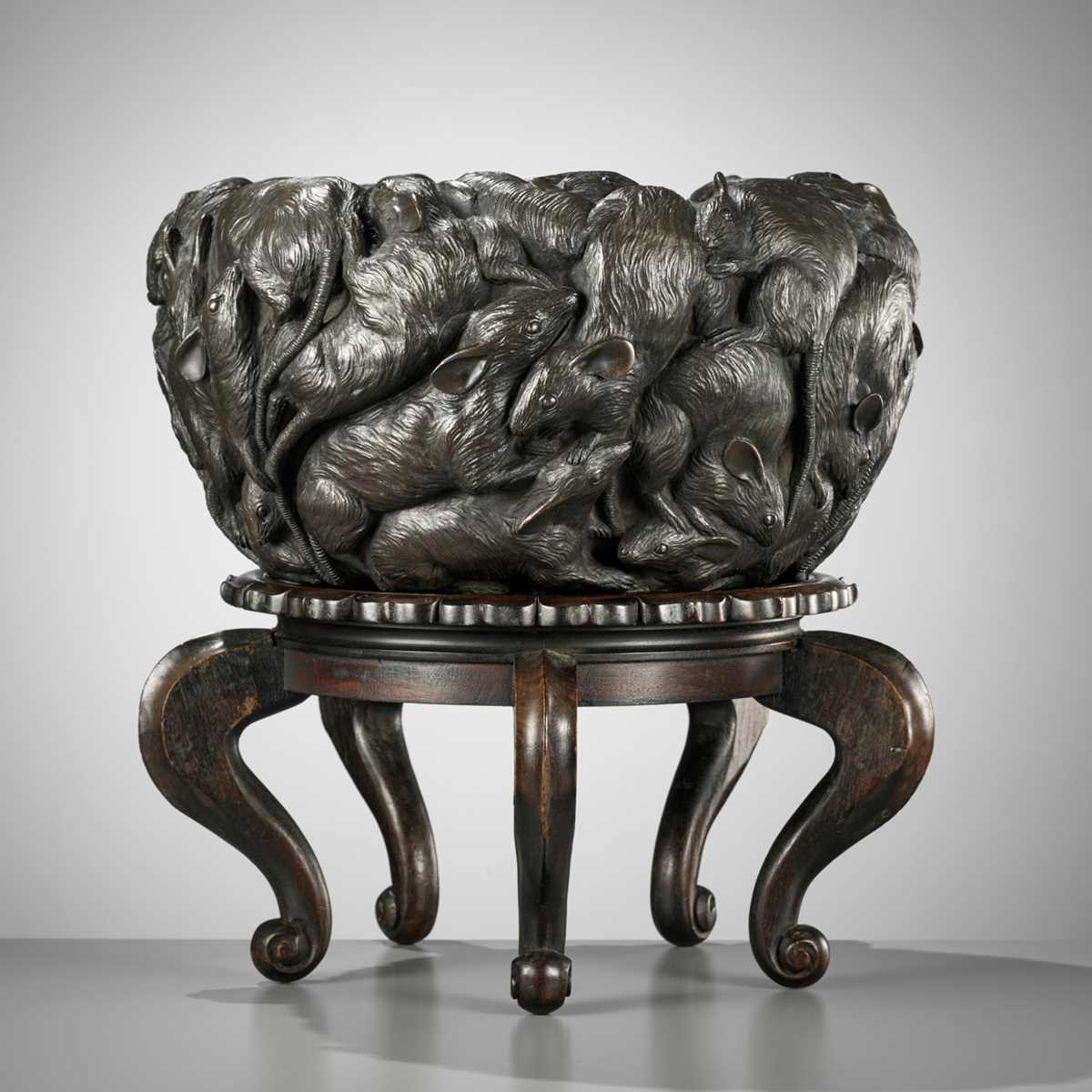

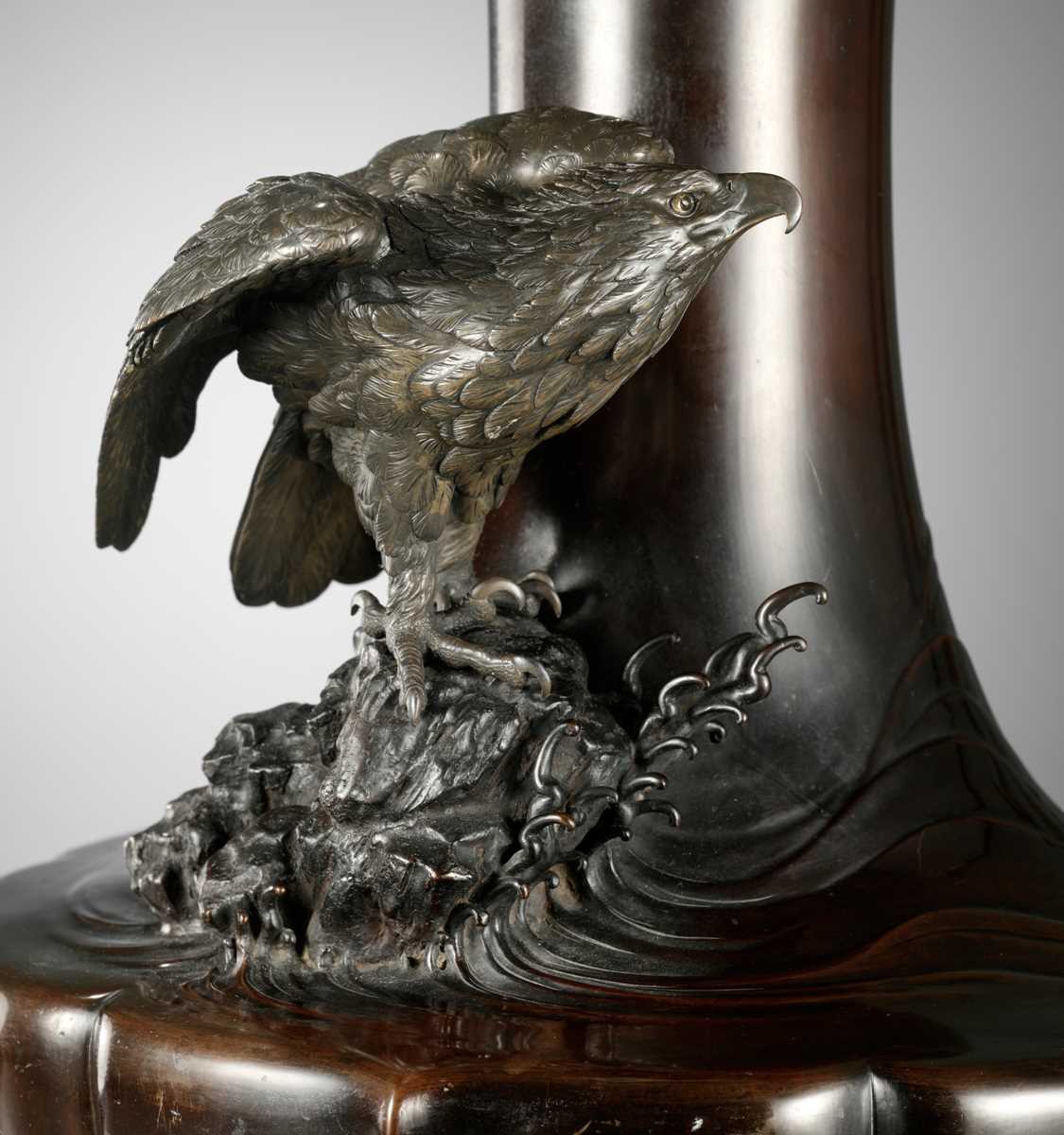

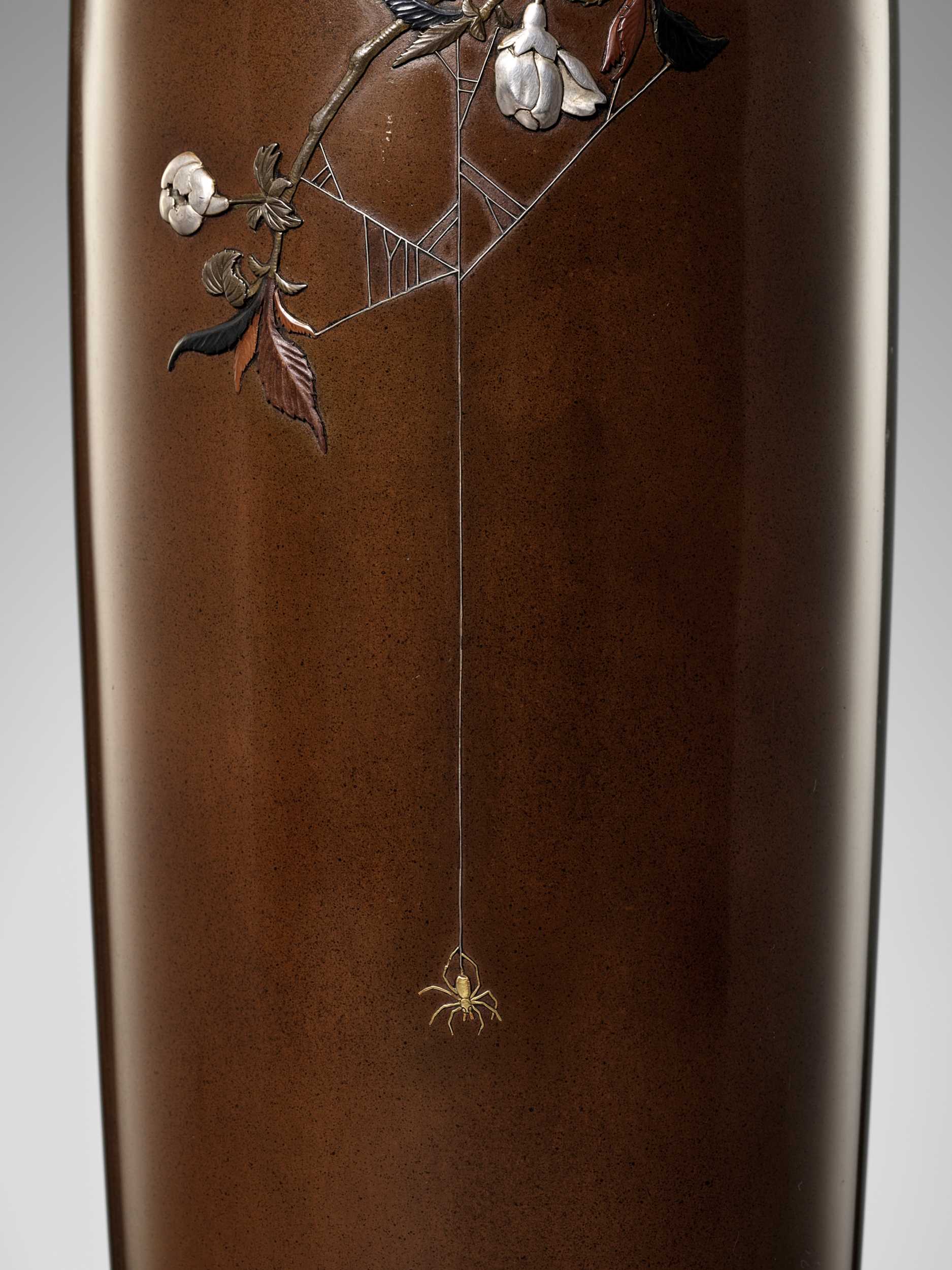
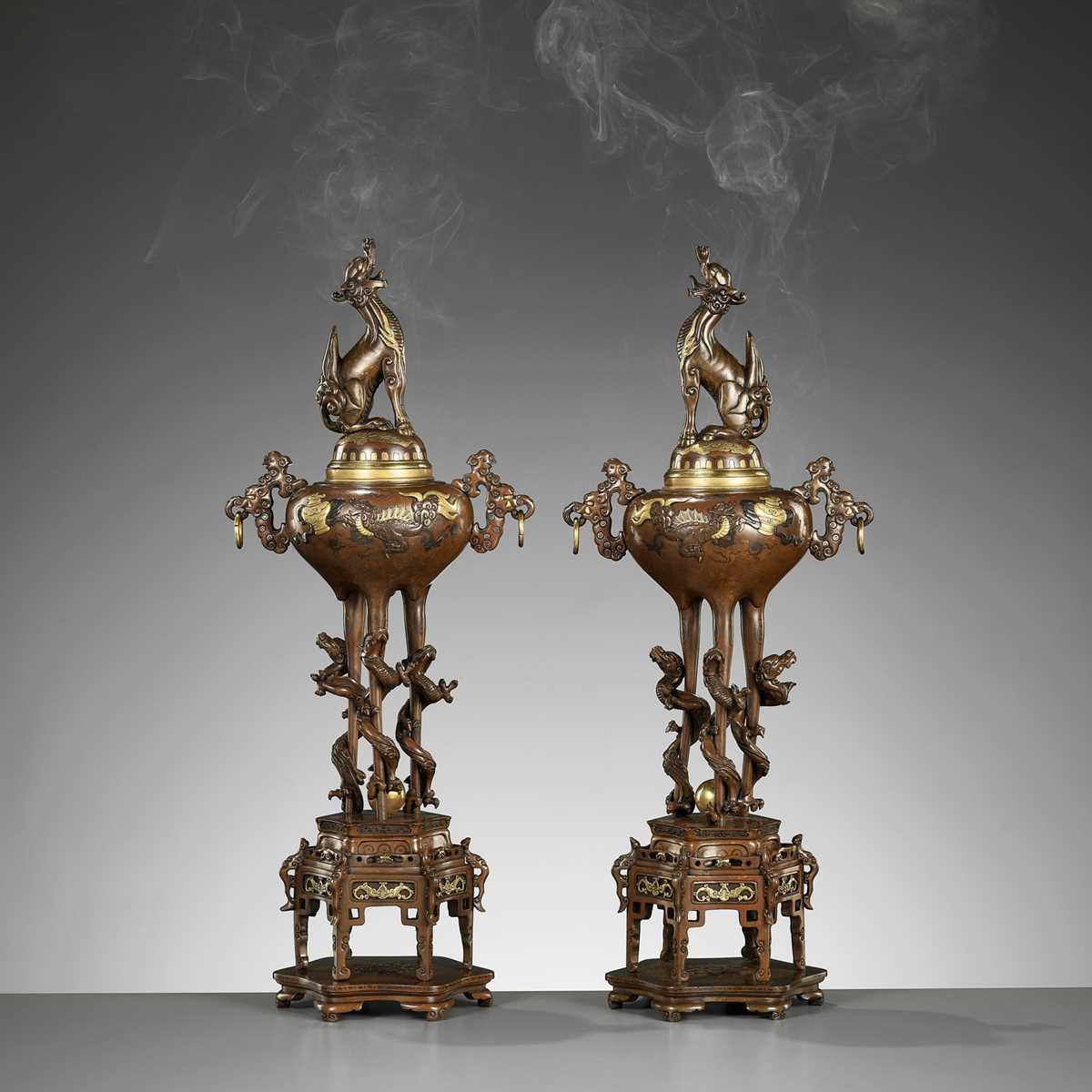
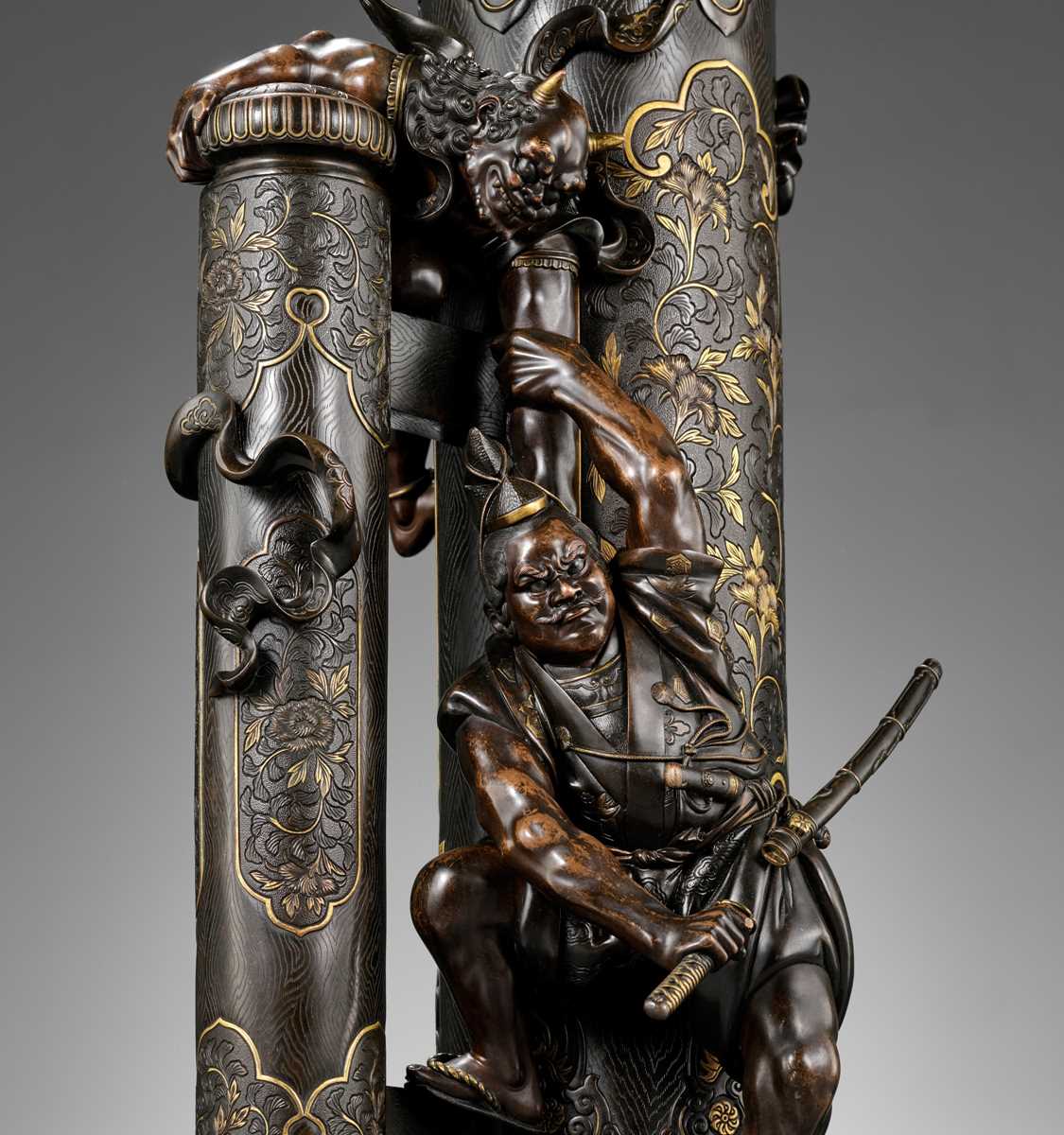
Testen Sie LotSearch und seine Premium-Features 7 Tage - ohne Kosten!
Lassen Sie sich automatisch über neue Objekte in kommenden Auktionen benachrichtigen.
Suchauftrag anlegen